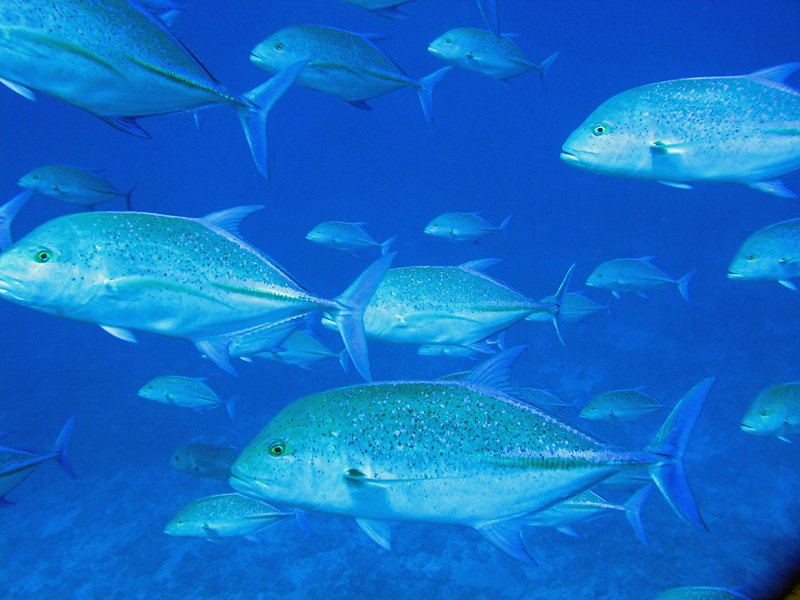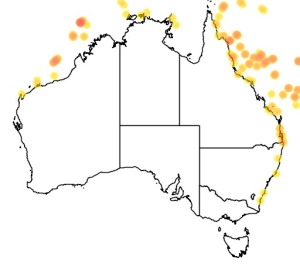Colours
Distinguishing features
A large, fast moving bluish-silver fish with a speckling of fine black and blue spots over the flank, and electric blue fins. Usually seen in in pairs or small schools along the edges of reefs and in passes.
Size
- Up to 117 cm (Standard length)
Depth range
- Depth range data is not yet available.
Synonyms
Distribution
Distribution and habitat preferences
Generally areas of deep water close to reef edges, favours locations with good water movement and plentiful schools of planktivorous prey fish. Small individuals are commonly seen in shallow lagoonal areas.
Can be found in most reef habitats around the island, although prefers reef margins near deep water.
Behaviour
This species feeds on both pelagic and reef associated fishes and invertebrates. Adults have been shown to target reef fish spawning aggregations, and small individuals will often join with benthic carnivores such as Goatfish and Sweetlips in order to hunt cooperatively. Juveniles of this species are found in shallow estuary habitats and migrate out to reefal waters at about 25-30cm length. Adults roam over quite large areas (up to 10km), and in Hawaii were found to regularly move between daytime and night-time habitats that could be several km apart. This species is mature at about 2 years and lives to more than 12 years.
Web resources
Danger
- unspecified - This species is known to have caused ciguatera poisoning and should not be eaten.
References
References that assist with identification
- Allen, G., R. Steene, P. Humann and N. Deloach (2003). Reef fish identification: Tropical Pacific New World Publications Inc., Jacksonville, FL, USA.
- Randall, J.E., G.R. Allen and R.C. Steene (1990). Fishes of the Great Barrier Reef and Coral Sea University of Hawaii Press, Honolulu, Hawaii.
Other references
- Graham, R.T. and D.W. Castellanos (2005). Courtship and spawning behaviors of carangid species in Belize, Fishery Bulletin, 103: 426-432. LIRS catalog number 90033.
- View all references





